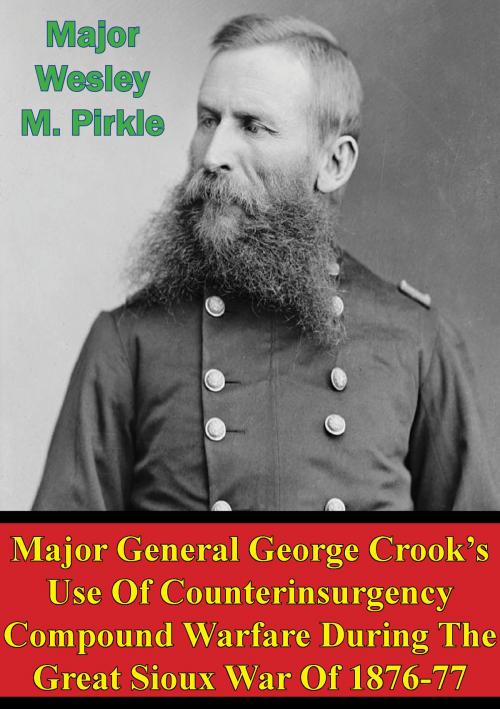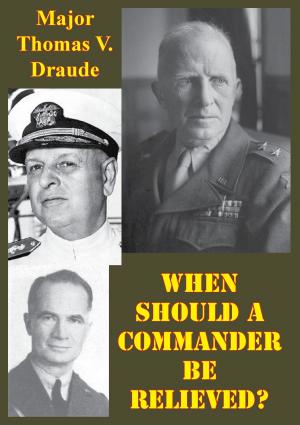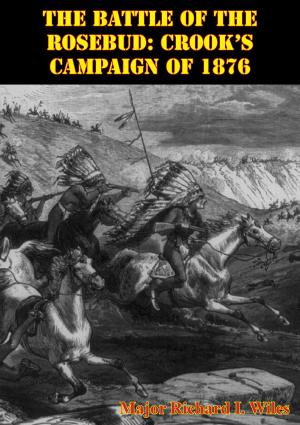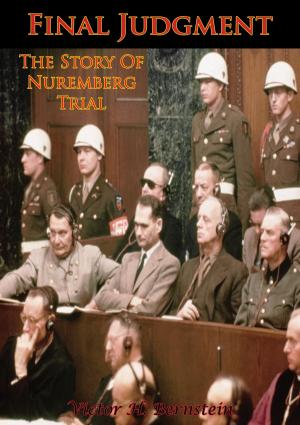Major General George Crook’s Use Of Counterinsurgency Compound Warfare During The Great Sioux War Of 1876-77
Nonfiction, Social & Cultural Studies, Social Science, Cultural Studies, Native American Studies, History, Americas, United States, 19th Century, Biography & Memoir| Author: | Major Wesley M. Pirkle | ISBN: | 9781786252197 |
| Publisher: | Normanby Press | Publication: | November 6, 2015 |
| Imprint: | Normanby Press | Language: | English |
| Author: | Major Wesley M. Pirkle |
| ISBN: | 9781786252197 |
| Publisher: | Normanby Press |
| Publication: | November 6, 2015 |
| Imprint: | Normanby Press |
| Language: | English |
This thesis will analyze Major General George Crook’s performance during the Sioux War of 1876-77 and attempt to answer whether or not Crook successfully fought the Native Americans by effectively implementing the concept of counterinsurgency compound warfare. Counterinsurgency Compound Warfare is the simultaneous use of a regular or conventional force and an irregular, indigenous force in unison against a common enemy. A highly skilled conventional force fighting an insurgency will often face significant cultural, ethnic, linguistic and physical challenges. An irregular, indigenous force can meet many of these challenges by working in concert with the conventional force. Major General George Crook sought to utilize Indian allies outside their traditional roles as scouts and utilized his forces in mutually supporting roles within each force’s means and capabilities. The efficacy of an indigenous, irregular force is not only military in nature but, when used appropriately and honestly, this force serves as a vehicle of influence with native populations. The mutually supporting nature of this relationship enhances the strengths of both forces while limiting their inherent weaknesses. This thesis will attempt to explain how Crook was successful when he faced ethnic divisions, interagency rivalry and political hindrances while displaying adaptability as a leader and the ability to continue to learn while fighting a difficult counterinsurgency war.
This thesis will analyze Major General George Crook’s performance during the Sioux War of 1876-77 and attempt to answer whether or not Crook successfully fought the Native Americans by effectively implementing the concept of counterinsurgency compound warfare. Counterinsurgency Compound Warfare is the simultaneous use of a regular or conventional force and an irregular, indigenous force in unison against a common enemy. A highly skilled conventional force fighting an insurgency will often face significant cultural, ethnic, linguistic and physical challenges. An irregular, indigenous force can meet many of these challenges by working in concert with the conventional force. Major General George Crook sought to utilize Indian allies outside their traditional roles as scouts and utilized his forces in mutually supporting roles within each force’s means and capabilities. The efficacy of an indigenous, irregular force is not only military in nature but, when used appropriately and honestly, this force serves as a vehicle of influence with native populations. The mutually supporting nature of this relationship enhances the strengths of both forces while limiting their inherent weaknesses. This thesis will attempt to explain how Crook was successful when he faced ethnic divisions, interagency rivalry and political hindrances while displaying adaptability as a leader and the ability to continue to learn while fighting a difficult counterinsurgency war.

![Cover of the book The Invasion of the Crimea: Vol. VI [Sixth Edition] by Major Wesley M. Pirkle](https://www.kuoky.com/images/2017/january/300x300/9781787203488-tMXY_300x.jpg)


![Cover of the book The Stars Bear Witness [Illustrated Edition] by Major Wesley M. Pirkle](https://www.kuoky.com/images/2015/november/300x300/9781786254757-THHk_300x.jpg)



![Cover of the book Vietnam Studies - Command and Control 1950-1969 [Illustrated Edition] by Major Wesley M. Pirkle](https://www.kuoky.com/images/2014/august/300x300/9781782893677-krRu_300x.jpg)


![Cover of the book The Invasion of the Crimea: Vol. VII [Sixth Edition] by Major Wesley M. Pirkle](https://www.kuoky.com/images/2017/january/300x300/9781787203495-t7t0_300x.jpg)


![Cover of the book Vietnam Studies - RIVERINE OPERATIONS 1966-1969 [Illustrated Edition] by Major Wesley M. Pirkle](https://www.kuoky.com/images/2014/august/300x300/9781782893646-410G_300x.jpg)
